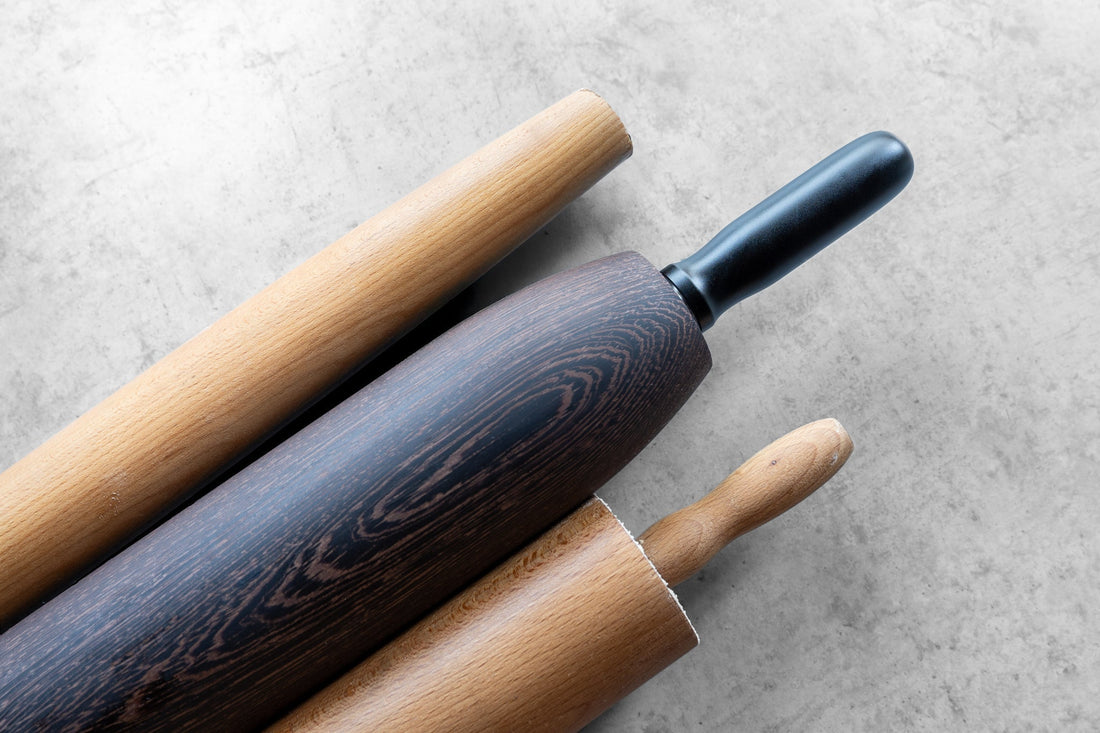When it comes to rolling pins, bakers often find themselves choosing between two classic styles or pin types: the American rolling pin and the French rolling pin. Each has its own advantages and drawbacks, making the choice highly dependent on personal preference and baking needs, making you wander which rolling pin type is right for me?
The American Rolling Pin
Often called the "baker's" or "ball-bearing" rolling pin, the American-style pin features a cylindrical barrel that rotates around a central shaft, with handles on either end. This design allows the barrel to roll independently of the handles.

Benefits:
Ergonomics: The handles and rolling mechanism make it easier to apply significant pressure, which is particularly useful when working with springy or dense doughs, such as those used for croissants and certain breads.
Ease of Use: The comfortable grip helps distribute even pressure throughout the rolling motion, making it an excellent choice for beginners who may struggle with consistency.
Drawbacks:
Dough Markings: The sharp edges of the barrel can leave unwanted indentations in the dough, particularly when rolling out larger sheets. Overlapping strokes often fail to smooth out these marks.
Disconnected Feel: Many bakers find that the handle-and-axle system creates a detached feeling from the dough, especially when the rolling pin has a thin axle that bends under pressure or loose handle-to-bearing connections.
Limited Maneuverability: The rigid, sharp-edged barrel can make it difficult to shape dough with precision, especially for delicate pastries.
The French Rolling Pin
French rolling pins are crafted from a single piece of wood and typically feature a tapered design, narrowing at both ends like a slender hourglass.

Benefits:
Enhanced Control: With no handles, bakers can apply pressure directly through their palms, creating a more tactile connection with the dough. This makes it easier to feel and adjust thickness in real time.
Smoothe Overlaps: The tapered edges reduce pressure at the ends of the pin, allowing for seamless, stroke-overlapping movements without creating noticeable marks in the dough.
Drawbacks:
Achieving Even Thickness: Rolling dough evenly requires mastering the balance between applying and releasing pressure. Without handles for extra support, it's easy to create uneven, wavy surfaces, which can be frustrating when aiming for a uniform crust or pasta sheet.
Fatigue Factor: Because pressure is applied directly with the palms, using a French rolling pin can become tiring, especially when working with tougher doughs that require sustained force.
The Rolling Wonder: The Best of Both Worlds
Unlike traditional American and French rolling pins, the hybrid Rolling Wonder seamlessly combines the benefits of both designs while eliminating their shortcomings.
It features a tapered shape that allows for enhanced control and smooth, seamless rolling, much like a French pin. At the same time, its precision ball-bearing system and oversized stainless steel shafts provide effortless motion and durability, addressing the ergonomic advantages of an American pin without the common issues of disconnection and fatigue. This fusion of features makes the Rolling Wonder the ultimate tool for bakers seeking both precision and ease of use.


